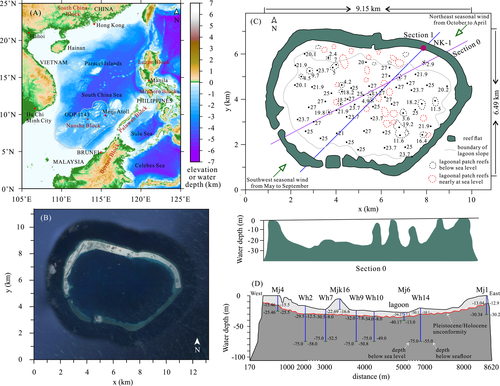
Several theories have been proposed to explain atoll formation. While karst dissolution during glacial periods and preferential coral reef accretion along raised bank margins during deglaciations and interglacials have been invoked to explain atoll formation, the respective roles of karst dissolution and reef margin construction in atoll formation have not been adequately evaluated by simulations. In this study, we conducted three-dimensional numerical simulations of the Quaternary development of Meiji Atoll in the southern South China Sea based on interpreted data from a 2020-m-deep borehole drilled on its northeast rim in 2018. Our results suggest that the origin of atolls is more likely due to spatially differential dissolution across margin and interior areas (i.e., minimal along margins and maximal in bank centers) rather than preferential reef accretion along margins of flat-topped banks. Preferential reef accretion along margins of flat-topped banks that can result in central lagoons and atoll morphology can hardly result in the formation of lagoonal patch reefs that reach mean sea level. Preferential reef accretion along margins is mainly predicated on the karst-induced morphology that has a central depression surrounded by raised rims, that is, using antecedent karst morphologies. If topographic highs in the lagoon are similar in elevation to the margins, reef accretion on these topographic highs can be similar to that observed on the margins, resulting in lagoonal patch reefs that reach mean sea level. Our simulation shows that spatially differential dissolution across margin and interior areas is a critical driver of worldwide central lagoons and atoll formation.
Lui, J., Webster, J.M., Salles, T., Wang, S., Ma, Y., Xu, W., Li, G. and Yan, W. (2022) The formation of atolls: new insights from numerical simulations, Journal of Geophysical Research – Earth Surface, 127(8):
![]()
